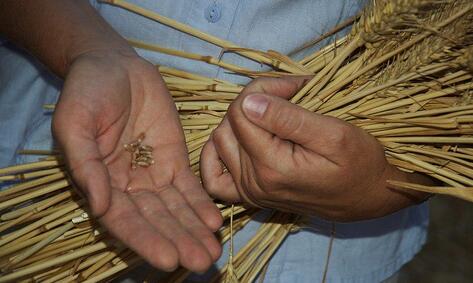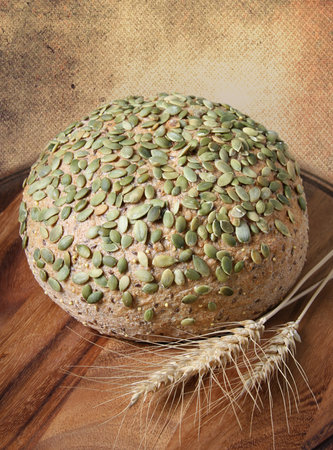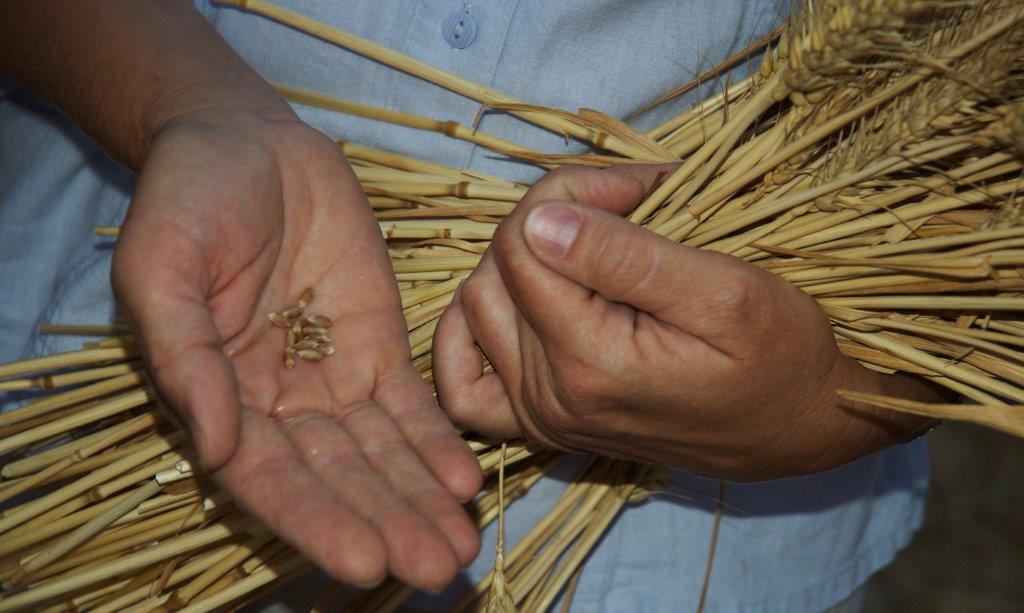With infinite choices available, Americans have never had as much freedom to shape our own dietary paths as we do today. For perspective, I remember stories of my grandfather and his siblings during the Great Depression eating only crackers for weeks on end, and then only eggs for weeks on end. Today, we have the luxury of making choices about our diets either for perceived health benefits or based on socio-political priorities (such as buying local).
Choices may be a luxury, but that doesn't mean they come easy. Consumers are flooded with conflicting information about diets and nutrition, just as they are flooded with new food product choices. Swimming in aisle after aisle of beckoning packages of food (most of which completely obscure the food itself), it's easy to forget that you can't actually eat the marketing. Underneath the packaging, what is the true value of whole grain products?
The Truth About Whole Grain Breads & "Whole Grain" Products
Amidst the onslaught of fad diets, bread and carbohydrates have taken some heat. Much of this is based on misunderstanding and over-generalization. Breads and carbs are not created equally, nor are all "whole grain" products. Here's an example: I can find boxes of popular snack foods at the grocery store advertised as “whole grain” (see this post on deciphering ingredient lists and refined grains vs. whole grains). What exactly does that mean? It means they are doing smart marketing (smart for them, not for you, the consumer). No processed, boxed snack food will compete nutritionally with bread created from freshly-milled whole grains. Aside from the "whole grain" label, they share little in common.
If you have questions about the health benefits of Great Harvest’s whole wheat bread, our staff Registered Dietitian & Nutrition Specialist Melissa Seith has done some whole grain myth-busting in her “5 Grains of Truth."

What to Focus On? Tried and True, Like Traditional Milling
NPR recently interviewed Dan Gottfredson, who owns the Great Harvest bakery in Rockville, Maryland for a segment on whole grains in wheat bread. One of NPR’s observations was that the traditional grinding stones used by Great Harvest in the flour milling process play a critical role in maintaining the integrity and nutritional value of the grains, because all the parts of the grain stay in the whole wheat flour. NPR also interviewed physician David Ludwig of Boston Children’s Hospital for the piece, who echos one of our core beliefs- specifically, that when it comes to processing foods, “less is more.”
Speaking of "Less is More," Where Did Your Food Come From?
If you’re like many people, it came from a box. You can turn it over and look at the list of ingredients for some clues as to what you are actually eating, but reading a list is not quite the same thing as knowing what a food is. Scott, our Corporate Chef, wrote a while back about where Great Harvest’s grain comes from. It’s very specific: our wheat “is sourced from a variety of family farms in north-central Montana and uses two small cleaning, blending, and packaging facilities to process the berries once they are harvested.” You can actually see pictures of the facilities and the process as well as learn the story of the wheat from field to arrival at Great Harvest, where it is freshly milled every day (at local bakeries, by bakers — not at an industrial plant by manufacturers). That kind of goodness can’t be boxed.
Back to Basics Food Tastes Good & Feels Good Too
There’s something to be said for keeping it simple. It probably made sense to someone somewhere in a corporate laboratory to bleach flour and take out the natural color and flavor and nutrients and then replace those with preservatives, chemicals, and additives. I can imagine a scenario where a scientist in a lab coat thought it would be a challenge to see if it could be done; to do it just to extend shelf life. Not because it was necessarily the smartest or best thing for the consumer.
I can also imagine people 60-70 years ago being duly impressed with the novelty of technologically-advanced, pre-sliced white bread sold in a plastic bag. But the novelty has worn off.

Whole Grain Breads Are Authentic
At the end of the day, we like to eat what makes us feel good. We want to provide our loved ones with food that tastes good, is good for them, and that doesn't hurt anyone in the process.
We've got information and pictures to show you why our bread is nutritionally superior (if you're into that sort of thing) but we like to think that when you walk into our bakeries and experience our bread (smell, see, and taste it), it speaks for itself. It's easy to taste the nutrition in our whole grain breads, while "whole grain" processed foods are just full of marketing.
To learn more about the nutritional value of whole grains, download our guide:





